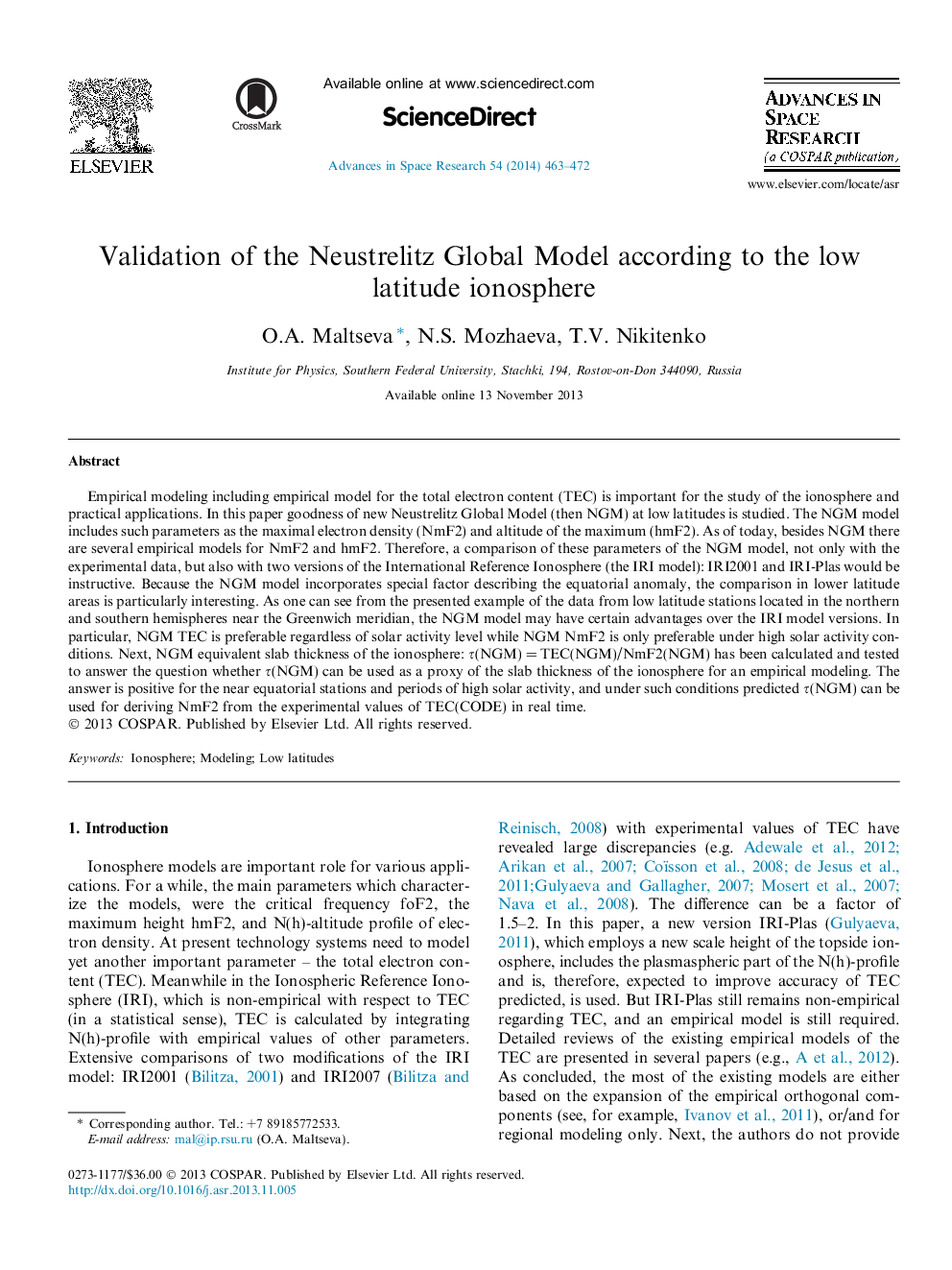| Article ID | Journal | Published Year | Pages | File Type |
|---|---|---|---|---|
| 1764911 | Advances in Space Research | 2014 | 10 Pages |
Empirical modeling including empirical model for the total electron content (TEC) is important for the study of the ionosphere and practical applications. In this paper goodness of new Neustrelitz Global Model (then NGM) at low latitudes is studied. The NGM model includes such parameters as the maximal electron density (NmF2) and altitude of the maximum (hmF2). As of today, besides NGM there are several empirical models for NmF2 and hmF2. Therefore, a comparison of these parameters of the NGM model, not only with the experimental data, but also with two versions of the International Reference Ionosphere (the IRI model): IRI2001 and IRI-Plas would be instructive. Because the NGM model incorporates special factor describing the equatorial anomaly, the comparison in lower latitude areas is particularly interesting. As one can see from the presented example of the data from low latitude stations located in the northern and southern hemispheres near the Greenwich meridian, the NGM model may have certain advantages over the IRI model versions. In particular, NGM TEC is preferable regardless of solar activity level while NGM NmF2 is only preferable under high solar activity conditions. Next, NGM equivalent slab thickness of the ionosphere: τ(NGM) = TEC(NGM)/NmF2(NGM) has been calculated and tested to answer the question whether τ(NGM) can be used as a proxy of the slab thickness of the ionosphere for an empirical modeling. The answer is positive for the near equatorial stations and periods of high solar activity, and under such conditions predicted τ(NGM) can be used for deriving NmF2 from the experimental values of TEC(CODE) in real time.
